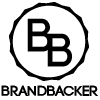Originally quoted from The Beauty Isle Insider by
The Creators of The Beauty Brains

~Image from: Medical Daily~
While we hate to disagree with dermatologists, we don't understand why they recommend a deep-cleansing shampoo when you have dandruff. Deep-cleansing-type shampoos will remove the surface flakes, but only a dandruff shampoo can address the cause of flaking and itching. So we'd recommend finding a good dandruff shampoo instead of chasing deep-cleansing, clarifying and anti-residue products. This may seem confusing to us because the beauty companies tell you there are so many different kinds of shampoo. But in reality, every shampoo on the market falls into one of a few basic categories.
There are only 4 main shampoo types in the world
All shampoos can be categorised by their basic function. So why are there what seem like thousands of products on the market, you ask? Because companies that sell shampoo need new ways to talk about their products to keep them sounding new and exciting. There's nothing wrong with companies being creative with their names and claims as long as they are honestly depicting what their products can do. But we can be smarter consumers if we can see beyond the marketing hype and understand the functionality of these four basic shampoo types.1. Deep Cleansing Shampoos (a.k.a volumizing, clarifying), balancing, oil control and thickening. These shampoos are designed to get gunk off your hair and scalp. They typically contain slightly higher levels of detergent so they foam and clean better. The include the examples above as well as salon products like Paul Mitchell Shampoo and Frederic Fekkai's Full Volume Shampoo.
2. Conditioning Shampoo (a.k.a moisturizing, 2-in-1, smoothing, anti-frizz, strengthening, color care, straightening and hydrating). These kinds of formulas are all about leaving a moisturizing agent, like silicone or polyquaternium-10, on the hair to smooth it. They are very good for dry hair, especially if you color-treat or heat-style, but they can weight down fine hair. Good examples of this type include most of the Pantene formulas and some products from the L'Oreal Vive collection and Dove Advanced Care.
3. Baby Shampoos (a.k.a kids shampoo and tear-free). These are milder, lower-foaming surfactant formulas that are designed not to sting or burn your eyes. They're better for babies but they don't clean hair as well. Johnson's Baby Shampoo is the classic example, but this category also includes Touch of an Angel and The Little Bath.
4. Anti-dandruff Shampoos (a.k.a anti-itch, flake control and dry scalp). These are medicated shampoos that contain a drug-ingredient that controls itching and flaking. In the United States these are considered to be over-the-counter (OTC) drugs. Head & Shoulders is the leading dandruff product; other examples include Nizoral Danadruff Shampoo and Redken Dandruff Control Shampoo.
 Hello. My name is Riih Rion Pu Niao and I am a female blogger. I blog mainly about my personal opinions on beauty products, links to get free samples (in Singapore), monthly beauty topic(s) and other goodies related to beauty topics on this blog. What started out as curiosity back in April 2007 soon turned into serious blogging-mania for me.
Note that all photos featured in this blog are concentrated on the products itself, and I personally do not believe in trying to wrestle attention away from the products by constantly squeezing my mugshot in it. Photos are mostly and currently taken with a Canon Ixus 170 & Samsung Galaxy S7 and edited with Paint.Net & Giphy.
You can read more about me and this blog by exploring the links above.
For those of you who are unable to comment on Blogger, you can still make comments on my
Hello. My name is Riih Rion Pu Niao and I am a female blogger. I blog mainly about my personal opinions on beauty products, links to get free samples (in Singapore), monthly beauty topic(s) and other goodies related to beauty topics on this blog. What started out as curiosity back in April 2007 soon turned into serious blogging-mania for me.
Note that all photos featured in this blog are concentrated on the products itself, and I personally do not believe in trying to wrestle attention away from the products by constantly squeezing my mugshot in it. Photos are mostly and currently taken with a Canon Ixus 170 & Samsung Galaxy S7 and edited with Paint.Net & Giphy.
You can read more about me and this blog by exploring the links above.
For those of you who are unable to comment on Blogger, you can still make comments on my 



